Herbs I Have and What I Do With Them
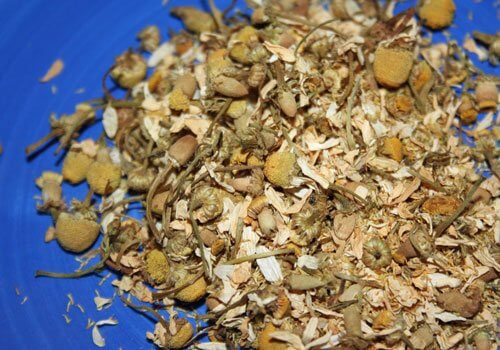
This post was originally published on August 18, 2011. Although our traveling “medicine” kit is big enough to sink a ship and full of things like herbal tinctures, essential oils, clay, arnica cream, and all sorts of other goodies, I am sorely missing my drawer full of dried herbs back home. Using them for homemade medicinal teas, baths, tinctures, steams, and poultices always made me feel that I had almost everything I needed for treating sicknesses or ailments right at my fingertips. Of course, I can still find fresh herbs like garlic, onion, fresh peppermint, ginger, etc. even as we travel, but there’s nothing like having a stock of dried herbs and learning how to use them for your family. This post I wrote a couple summers ago will give you a glimpse into the herbs I like to keep around and what I use them for. I’d love to hear about how you use herbs in the comments!
Herbs fascinate me.
These timeless plants have been used by various healers over thousands of years in order to treat symptoms, ease discomfort, improve mood or mental function, fight infection, and so much more. It seems to me that many Christians steer away from herbalism, using conventional medicine instead.
I have come to appreciate herbs, though, as a gentle healing gift from God. Every time we drive down to the town of Lynden, WA, I notice that sign from the herbal supplement company Flora, that “For every disease we know, God provides a herb to grow”. Whether that is actually true or not, I have no idea, but I do know that the more I study the plants in Creation and the medicinal properties that they have, the more I am in awe of the One who made them and gave them to us.
Just an Amateur
I am certainly not a herbalist. Far from it. At present, I am simply a woman who enjoys studying and learning about the history and practical uses of herbs, for use within our own family.
About a month ago, I mentioned casually on Facebook that I had been organizing my dried herbs in a drawer (and you’ll see what a joke the word “organizing” really was down below) and was amazed to realize how many I had accumulated over the past couple of years of casual study. Readers were instantly interested and curious to know exactly what herbs I do use and what it is that I do with them.
So, with the full disclosure that I am not a medical professional of any sort, nor a trained herbalist, I would love to share with you what this amateur herb-loving mama uses.
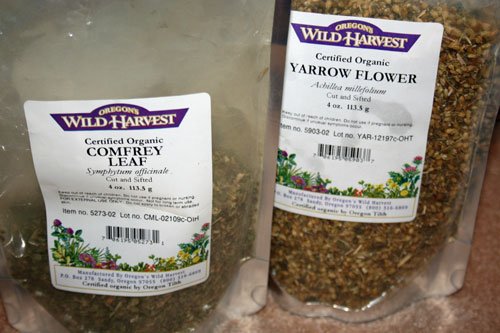
Herbs in My Home and What I Use Them For
Chamomile (top image): This is a favorite for making relaxing teas, especially for children who are restless at night or for those who are sick and weary. It’s wonderful just steeped on its own, or combined with other soothing herbs.
Catnip: Strange as it sounds, I love using catnip! This herb is particularly relaxing and calming. I have used it in a post-partum tea for myself, when I was struggling with anxiety and mild depression. It also works wonders as a weakly brewed tea to be given to a colicky, fussy baby. I definitely noticed the calming effect it had on both myself and my last baby (and it seemed to soothe her tummy as well).
Yarrow: I bought yarrow a couple of years ago with big plans for using it (mostly based on this book, that I have yet to get my hands on inexpensively). I wanted it for digestive help, for boosting the immune system, and for help with balancing hormones. It unfortunately has ended up as one that I haven’t become as experienced with as I would like, although I did add it to a potent immune-boosting, anti-flu tea that I made for myself a year or two ago. I have read that it is useful for cuts and infections in wounds, although I tend to run to comfrey for that purpose instead.
Comfrey: This is my herb of choice when there is a need for external healing. I make poultices with comfrey to place on strained or swollen muscles, on scraped knees, on cuts, on rashes, etc. Basically, any need for skin or tissue healing. It’s also great in baths for soaking in, depending on where the injury or need for healing is. I also added it to the oat and clay baths that my children soaked in while they had chicken pox this spring, to help encourage faster healing of the sores.
Dandelion: Harvested from my own yard, dandelion leaves are mildly detoxifying, and strengthening for the liver. They are also nutritious, but you need to keep in mind their detoxifying effect. Much more potent is the dandelion root, often used in teas intended for specific times of cleansing or detoxification. The leaves and flowers can also be used fresh, as a nutritious form of “weed control”!
Red Raspberry Leaf: This herb is wonderful in teas for women, as it is well known as a uterine toner and it contains high amounts of vitamin C. It can be used in a woman’s tea during any season of life, but if particularly helpful during pregnancy to prepare the uterus for labor and birth and help to reduce the possibility of complications like hemorrhage. Some swear by it during first trimester, but there are others who warn against it at that time. Personally, I like to use it more conservatively, starting with small amounts in my tea during second trimester and upping in to several cups per day during the third trimester. It is also wonderful in lactation tea after birth.
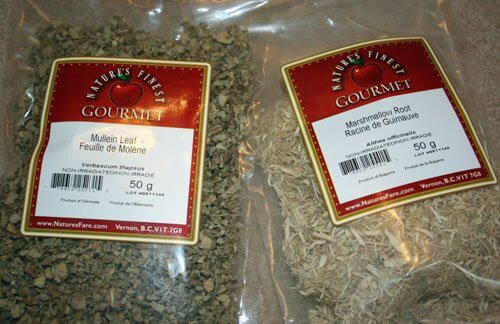
Mullein: This is a newer herb to me, but one that I found very useful this winter. Several members of our family kept battling a very deep cough that would just seem to go away, and then come back with a vengeance. I made a mullein steam by bringing half a pot of water to a boil, turning the heat off, and adding half a cup of dried mullein. Then we would take turns putting a towel over our head and breathing the steam from the pot in deeply. I really felt that it gave us a respite from the constant coughing and helped to clear up some of the deep phlegm. Afterwards, I would strain out the herbs and we would drink some of the remaining “tea”. I also added mullein to my honey and onion cough syrup this winter.
Marshmallow Root: Another herb that I added to my repertoire this winter, this one is also very helpful for coughs. I added it to my cough syrup as well, and used it in teas for those dealing with coughs and colds. It helps to soothe inflammation, which is what makes it so helpful for bronchial issues and for decreasing coughing fits.
Peppermint: Besides the fact that I just enjoy a good mint tea sometimes, I also use peppermint teas to aid in digestion. It’s helpful to sip on when you have indigestion, and can help with nausea.
Nettles: I use nettles for their nutrient density. They are bursting with many vitamins and minerals. This is an important ingredient in my homemade pregnancy nutrient tea (and yes, I will share this recipe shortly). There are many other uses of nettles which I am eager to learn, since my mother-in-law just moved in to a new home with massive amounts of nettle plants on the property!
Red Clover: I have used this herb in pregnancy nutrient teas, although I have recently read that there are conflicting ideas about whether it is safe in pregnancy or not. I’m continuing to do research on it and haven’t made a decision one way or the other yet.
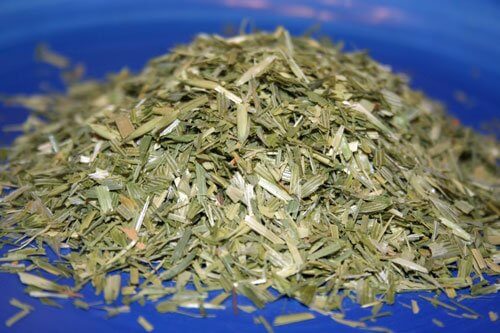
Oat Straw: Another addition my pregnancy tea, oat straw is high in nutrients, especially minerals calcium, magnesium and silica. It also has a soothing, restful effect, making it a nice addition to any tea.
Ginger: This is a perfect warming, winter herb. One of my favorite ways to use powdered ginger is in a hot bath, when I am feeling flu-ish or have a fever and chills. It warms the body and helps to bring down a fever, and I find it helps me to relax enough to sleep better when I’m sick. I also add it to warm honey and lemon teas (and chamomile tea as well) for those who have colds or flus, as it helps to increase circulation, which in turns encourages a faster recovery. It is also good for decongesting, especially when you have a stuffed nose during a cold.
Burdock: This is one that I have only played around with a little bit. I bought some fresh, wild burdock root at a farmer’s market last summer, because I had learned that it was very helpful for detoxifying, especially for those with heavy metal concerns. I chopped and dried it myself and have added it to teas for the purpose of cleansing. But, it is strong and bitter tasting, so it’s a bit tough to get into the child that I wanted to give it to (or adults, for that matter!). I try to hide it amongst more pleasant tasting herbs and add some honey to make it go down easier.
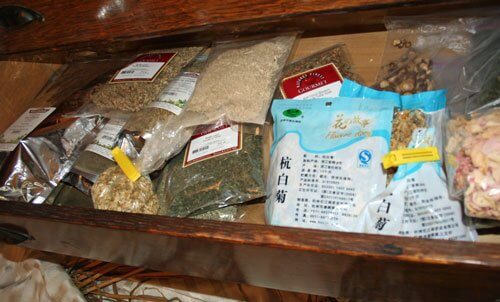
Other Herb Resources I Find Helpful
I would like to purchase more books on herbs and how to use them for healing, but at this point in time I usually rely on Google searches and I try to look at many different articles and sources in order to weed out bad information. But, here are a few resources that I do actually use and find helpful:
10 Essential Herbs by Lalitha Thomas: This is unfortunately out of print, so you have to find used copies. My mother-in-law has one and I like to take peaks at it or borrow it when I can. This book is very practical. It only focuses on 10 herbs, but I found it so helpful and informative.
The Complete Medicinal Herbal by Penelope Ody: This is a great resource to have, although it isn’t as practical as I would like it to be. It includes a large number of herbs, including brief history, usages, and excellent pictures and diagrams. I go to it often for reference and to understand more about a herb, but it doesn’t help me as much with the “how” of using herbs.
Herbal Nurturing: This is an inexpensive ebook by Michele of Frugal Granola. She is not a certified herbalist, but she has studied and practised far more than I have, and it is obvious that she is very comfortable using herbs. Her book is full of easy-to-make recipes for common ailments, including many specifically for women and children. If you’re looking for a place to start, this might be a good fit for you.
If in doubt, always ask a certified natural practitioner. A midwife will usually be quite knowledgeable on what is safe for mama and baby, and most naturopathic doctors are skilled in the use of herbs as well. If you can find a certified herbalist, even better!
So these are the herbs lurking around my home and what I use them for… how about you? Do you use herbs?




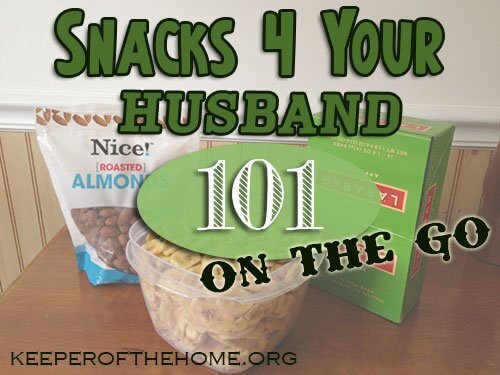
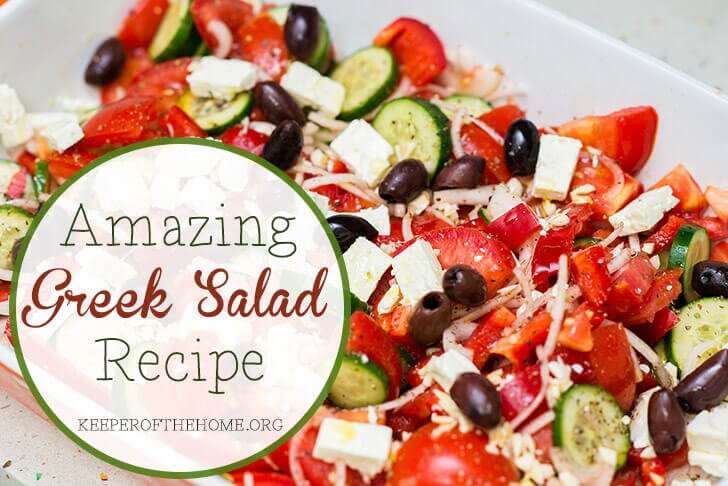
I love this post, Stephanie. Thank you. I’m sharing this with my FB and Twitter followers 🙂
I just learning about herbs, so fun!
I’m haveing a giveaway over at my blog come see!!!
jonncarramoorman.blogspot.com
Blessings!!!
This post is so helpful! I have started dabbling in herb usage but am still such a newbie. Thanks for just laying it all out for us! I used red raspberry leaf while pregnant, too. I waited until sometime in the second trimester as well. I was hoping to strengthen my uterus with the vitamin C and try to avoid having my water break before going into labor. (It did the first time, which ended up in a pitocin-“augmented” medicated labor.) My water broke about 5 minutes before active labor this past pregnancy, and I was able to have the natural birth I desired!
My pediatrician (integrated doc) was just telling me yesterday about a good remedy for teething. He said to steep chamomile tea for 15 minutes (covered of course), soak a clean wash cloth in it, and stick it in the freezer. He said both the cold and tea itself would be so soothing to sore gums!
@Erin@TheHumbledHomemaker, I had the same experience with my first and second labors! This pregnancy, I was drinking red raspberry, nettle, comfrey, and oatstraw infusions (steeped in boiling water over night). I drank it cold from the fridge with a couple of drops of stevia extract in it and it reminded me of regular iced tea. I started in the second trimester too, when my nausea lifted, and really tried to step it up towards the end. I tried to drink a strong red raspberry infusion in labor, but the contractions were so intense and so much more painful, that I decided to let my body choose its own pace. 🙂
@Andrea S, I’m hoping to incorporate it even more into my next pregnancy (Lord-willing there is one one day!). When my water broke before contractions (at least contractions I was aware of) this past pregnancy (10 months ago), I was like: “Oh no–not again!” I was overjoyed when my active labor started a few minutes later!
@Erin@TheHumbledHomemaker, My waters also broke before I recognized any contractions with my first pregnancy. There was also meconium in the waters so they hooked me up for continous monitoring. I think my ability to move around is what caused the c-section and hemorrhage I experienced. God has not blessed us with another full term baby yet, but I’ve been researching the herbal teas I can take during the pregnancy to help tone the uterus. Red raspberry and nettle are suppose to help greatly with the hemorrhage as well – which is my biggest fear since I lost so much blood. I am very encouraged by your experience of a natural birth for your second!
Also my son is now getting his molars in. I’ll try the chamomile washcloth today!
Thanks for sharing!
@Sara, I think the Vit. C in the tea helped as well as extra vit. C supplements I took (although I couldn’t afford the highest quality supplements). I also read, read, read my entire pregnancy because I really, really wanted to not have any pain meds or be confined to a bed like the first time! I also had a doula and one of my best friends is a massage therapist. The two of them, along with my hubby, formed a great support team to help me achieve a natural labor.
I didn’t have a C-section the first time, but I did have a 4th degree tear. I had several doctors tell me I would have to have C-sections after that because of the tearing. Thankfully, my midwife said otherwise, and I only had a small 1st degree tear this past time.
It is completely possible to have a natural labor the second time around even if the first time didn’t go as planned!
I pray you get that baby you desire soon! And molars? Ouch!
Blessings to you!
Teas are great, but we also make our own tinctures from my herb supply. It’s more concentrated and easier to take, I think, for children sometimes. You can make an alcohol tincture or a glycerine one. Children like the glycerine much better for its sweetness. I also make a Comfrey salve and a multipurpose Green Salve. You can check out my herb page on Atthewateringhole.blogspot. Blessings! I enjoyed reading your post : )
@Julie Nitz, can you send/add a link? Couldn’t find it
@Julie Nitz, I really want to learn to make my own tinctures this winter. Definitely on my list of things to learn! 🙂
Peppermint tea is also a great fever reducer. You can sip on it, or you can brew a mug and pour it into a bath. Soak in it for a few minutes and then wrap up in a blanket once dressed if you are too chilled. A regular size mug in a regular depth bath is a good ratio.
I love learning more about herbs! I first was truly exposed to them during my first pregnancy, by my midwives & doula who often suggested a specific herb or homeopathy for a specific symptom. After that, I began to trust the healing power found in plants around us — certainly a gift from God!
What a great post! I’ve felt the nudging to start learning about herbs and home remedies lately, but it’s very intimidating to me. This is great to give me an idea of what different herbs can be used for! I would love to see a follow up post about the cost of these herbs. I have no idea what would be considered a good price for different herbs and what is just a rip off! Thanks again for the great information!
Great post with some valuable links! thanks! I have grown and used herbs for the past 20 years… so thought I would share a couple of things… * storing in plastic may not be your best choice, unless you are using BPA free plastic… I use only glass to store my herbs, and use the Foodsaver canning lid attachment to vacuum seal any jars that may be kept for longer storage times… * I grow and use lots of culinary and dye plants as well as the medicinal ones… about 1/3 of my 10×70′ poly tunnel greenhouse is devoted to herbs and they can easily be grown as perennials under cover * consider wildcrafting for some natives that are very useful, and some not actually herbs, such as elderberry, and others such as mullien, clover, dandelion, nettle, etc are to found in most native meadows.
You have a wonder home herbal stock! I am studying to become a herbalist & some of my favorite herbalists include: Rosemary Gladstar, Phyllis Light (my teacher) & Matthew Wood. The Little Herb Encyclopedia is a great source, as well as Mountain Medicine by Darryl Patton & Rosemary’s Herbal Recipes for Vibrant Health. I really enjoyed your post, thanks foe sharing such great, useful herbal knowledge.
@Mae Anne, Thank you for the recommendations. I will definitely look into those books!
I have been dabbling in herbs for about 6 years now. I love using them! Check into the use of Elderberry. Great for keeping the nasty stuff away in the winter (and summer). Also, if you haven’t tried chocolate for coughs, you need to! Try a 70% or more dark chocolate for a great cough suppressant. I usually only use it at night, b/c it can keep you from coughing out the junk that NEEDS to come out! (no milk chocolate – it can add to the phlegm.)
I’d love to hear MORE on herbs!
Love it! I have a 1001 Natural Remedies book that is always using herbs for each ailment they address. They even have recommended the ca nip as well, haha. I will be bookmarking this post for future reference. 🙂
I have the Complete Medicinal Herbal, too. 🙂 First herb book I ever bought. I’ve added several from Rosemary Gladstar, Susun Weed (be mindful of some wiccan tendencies in her works), and my newest additions have been from Aviva Jill Rohm – I don’t think she’s an actual herbalist, but she’s a midwife, and has some great books out there on pregnancy & children.
PS – if you think your drawer is messy, I’ll show you my 3 cupboards. 😉
@Meg @ Cracking An Egg, Aviva has a natural pregnancy book that I really want. There’s also The Wise Woman’s Guide to the Childbearing Years (is that by Weed? I can’t remember) that I would like as well.
And yay, someone else has messy herbs!
Great post! I will probably refer back to it! I am not a proficient herb user, but I am learning bits at a time. The book I refer to is Kids, Herbs, & Health by Linda B. White, and Sunny Mavor. It was given to me when I had my first child by a lady who had an herb shop, and I have found it invaluable ever since!
Great post! I’m also learning about using herbs for my family, and have recently (last year or two) become very interested in the subject. Per the use of burdock, I stumbled across a recipe for a nourishing decoction with burdock root, dandelion root, astragalus root, and fennel seeds. It is simmered for quite a long time and then sweetened with honey. You store it in the fridge and take a few tablespoons per day. I found it extremely nice tasting, not at all bitter, and very rich and nourishing. It’s from The Family Herbal: http://thefamilyherbal.blogspot.com/2011/05/recipe-blood-buildingliver-nourishing.html.
Since I have quite severe adrenal fatigue, I’m taking various adaptogenic herbs and trying to learn more about which ones are just right for me. It’s certainly a fascinating study, and now I want to grow my own herb garden! Plus, it would seem that our right to purchase natural medicines such as these may increasingly be in danger of being taken away, both in the U.S. and in Canada, so I feel that it is going to be increasingly important to learn to grow and harvest these kinds of plants ourselves. What can anyone say against a beautiful flower garden? 😉
LOVE these posts! Keep up the great work!
@Jana, I also suffer from severe adrenal fatigue and chronic epstein barr, would love to hear what you are using to help you.
@lisa todd, right now I’m taking FCLO, a whole host of vitamins (C, D3, E, B-complex), supplements/herbs such as astragalus, ashwaganda, an adrenal support formula which has all the other recommended adaptogenic herbs for this condition, kelp, olive leaf, chlorella, and then a sleep formula for resting well at night. I was taking adrenal cortex too, but I thought it caused digestive issues, so I stopped that, at least for a while. I’m just testing taking adaptogenic herbs as I have read they can actually have a stimulating effect on severe adrenal fatigue, which of course is not desirable! Taking lots of Vit C seems to help me greatly, particularly with energy and stopping my heart from pounding (which I get quite a bit).
I also like taking herbal decoctions, such as the one I described above….I feel they are very nourishing for the body and they don’t taste half bad either! Right now I’m also taking comfrey root/marshmallow root tea for my receding gums, and I feel sure those are helping with my overall health too. I think I’ll try the tea mentioned by Andrea S. below…sounds really good!
I’d be interested to know what you’re taking as well! 🙂
This doesn’t have much to do with herbs, but do you sprout things? Do you have any recommendations on a sprouter? When I looked on Amazon it seems like people’s responses are mixed about each type of sprouter. Any thoughts? If you do sprout, would you mind doing a post about it?
@Michelle, This is how I make green salad sprouts- https://keeperofthehome.org/2009/01/sprouts-the-easiest-greens-youll-ever-grow.html.
I also sprout grains like this (I didn’t write this one, but I do it similarly): https://keeperofthehome.org/2011/04/getting-started-sprouting-wheat-berries.html
I don’t use any particular sprouter. Just mason jars and various colanders/strainers. It works for me!
@Stephanie @ Keeper of the Home,
Perfect, thank you! That’ll save me buying “sprouter” I knew there had to be a cheaper/free way!
I am a big fan of herbs and herbal preparations. I have been using herbal treatments for the last 17 years. Additionally, I must have a whole book shelf devoted to herbal remedies.
This is so neat! I am very excited about herbs these days. My midwife’s apprentice just happened to be a wonderful herbalist (and doula and raw milk advocate, etc.) that I’ve been following for years. She suggests a strong infusion of nettles, oat straw, comfrey, and red clover blossoms for general good health. I put a cup of each into a gallon jar and add boiling water, letting it steep overnight. I refrigerate mine and drink it with stevia, like iced tea. During pregnancy, she recommends replacing the red clover with red raspberry leaves. It was a blessing during pregnancy when my body refused the prenatal vitamins to have such a mineral and vitamin rich drink, which the herbalist assured me began to be absorbed into my system starting in my mouth!
Just the other day, a woman from church offered to walk us around her yard and show us common “weeds” that could be consumed. I was excited to be taught what the nettle and plantain plants look like, among many others, and now I hope to get a dehydrator to start harvesting and preserving my own herbs! I wonder what my husband would think if I start growing a red clover and nettle patches in our yard. 🙂
What tools/supplies do you using when making tea? Please explain what tools would be helpful to have in my kitchen to use herbs. I do not want to purchase a tea ball and find out I should have gotten a different style or type/etc.
@Priscilla, Pretty much the only “tools” that I have and use at present are a french press (the kind you use to make coffee), glass canning jars of various sizes, a fine mesh strainer, and pots, wooden spoons, etc. I don’t really have anything special, I just make do with what I have!
Thanks for this post! What a great resource. I have a love for herbs as well, mostly in eating them in delicious ways 😉 but, I am just starting to learn the benefits of using herbs for natural remedies. Thanks for sharing this info!
You would love bulkherbstore.com I’ve gotten all my herbs from them and they are a family owned Christian company. I would also add that red clover (according to bulkherbstore.com) and thyme also help with symptoms of whooping cough! Great article thanks!
Those dandelion leaves are EXCELLENT for reducing the ankle swelling of late pregnancy. I only had that with one of my babies, but it was so bad my Birkenstocks wouldn’t buckle over my feet! (A crisis for a California girl!) Pour a quart of boiling water over a cup of dry dandelion leaves and let it steep for 20 minutes. It will be bitter. You will hate it. You will want to spit it out. A little powdered stevia might help, but will not solve the problem. Just drink it anyway. Sip it all day. The swelling should be gone or significantly reduced within 24 hours. I had to keep drinking a quart a day for the last two weeks of my pregnancy, but whenever I stopped, the swelling came back. It was worth it because the swelling was also raising my blood pressure and so when the swelling went away, the bp issue did too. And I felt a million times better!
The reason it works so well is that unlike prescription diuretics, it replaces nutrients that diuretics remove. So it isn’t stripping your body of nutrition that you and your baby need. My midwife recommended it and I’ve used it to help several other pregnant friends.